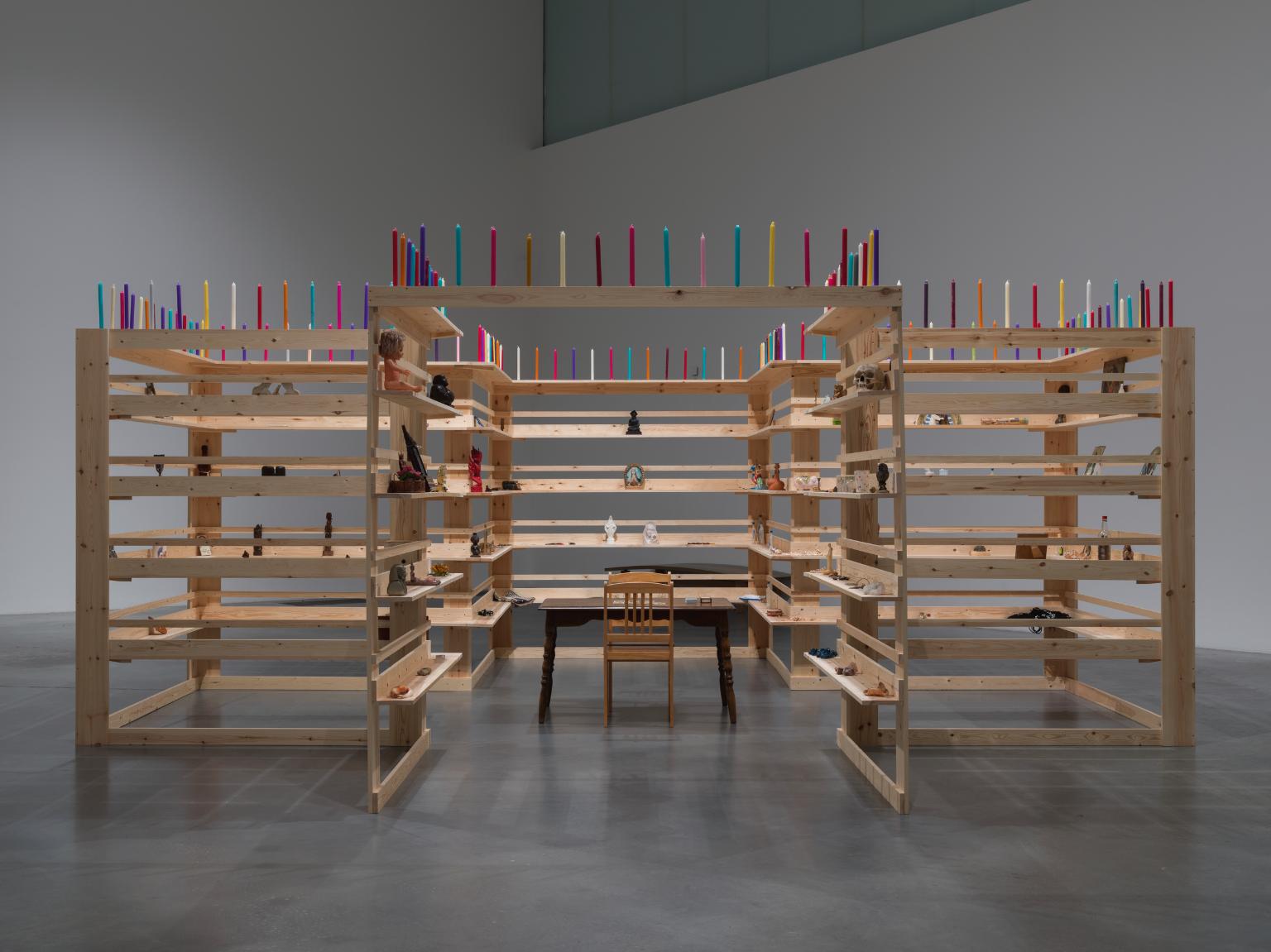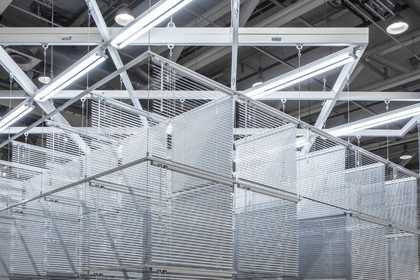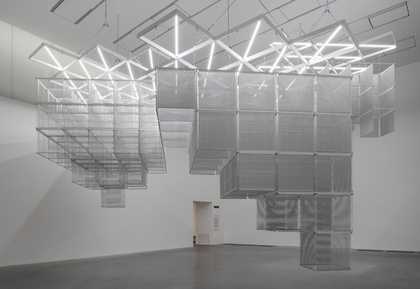Discover the work of Haegue Yang, who explores the history of conceptual art as shaped by a set of rules
Hague Yang often makes work using everyday domestic items, transforming them in extraordinary ways. This suspended sculpture is made of over 500 Venetian blinds. Yang’s choice highlights the unique sculptural possibilities of these ordinary window coverings. They can be flat or three dimensional, opaque or transparent, compressed or expanded.
This sculpture, made in 2015, references Sol LeWitt (1928–2007), a pioneer of conceptual art who made work by following self-imposed systems. Yang reinterprets his 1986 floor-based sculpture Structure with Three Towers. She replaces the open-sided cubes of LeWitt’s sculpture with Venetian blinds, magnifies the overall structure twenty-three times, divides it into three parts and suspends the work upside down from the ceiling. This process is reflected in the title: Sol LeWitt Upside Down – Structure with Three Towers, Expanded 23 Times, Split in Three.
By connecting her work to that of a well-known artist of an earlier generation, Yang questions conventions of authorship and originality. She borrows and adapts LeWitt’s rules, while translating his structure into an environment for the viewer to walk around, through and under. Her use of the blinds means that the play of light changes as we move around the sculpture. The choice of material also brings in ideas of privacy and visibility.
Art in this room




